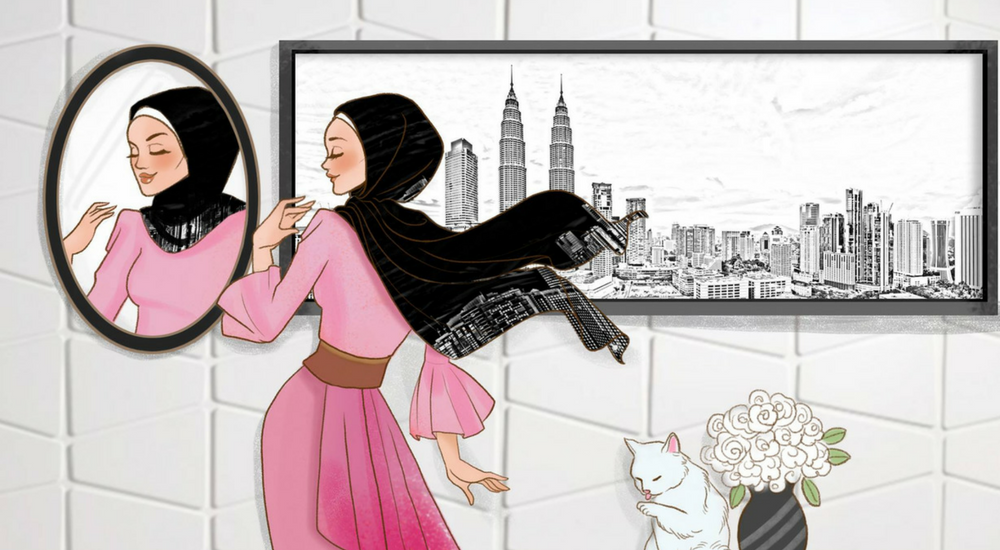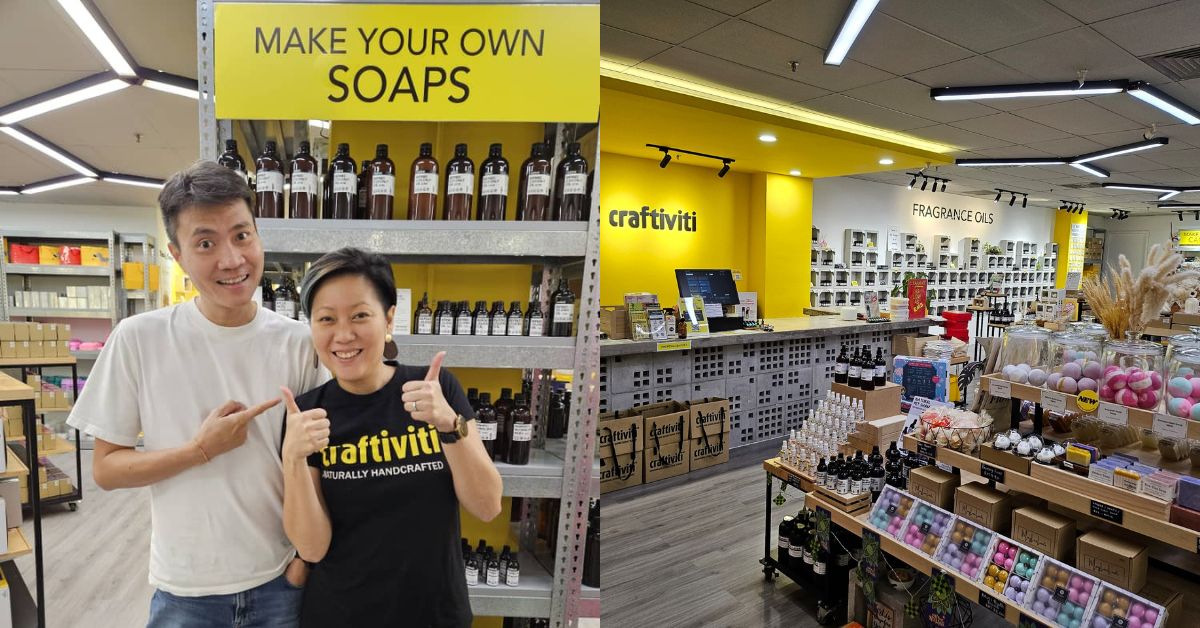With the inclusion of not one, but two Malaysian hijab e-commerce sellers on our recent Forbes 30 under 30 list, (Neelofa and Vivy Yusof #represent) it’s safe to see that the estimated $230 billion spent on modestwear estimated to reach $327 billion by 2019 statistic is no joke.
Modestwear in general has become so important to fashion that there’s a whole fashion show that will be based on it in London soon, and fashion’s eyes are now turning to cater to this new influx of modestwear sweeping the world.
We probably wouldn’t have imagined this just 5 years ago in Malaysia, but Muslim fashion is actively being celebrated, and Muslim/Muslimah e-commerce is a force to be reckoned with on an international mainstream arena.
Going into this, I am going to refer to “hijabi fashion” and “Muslim fashion interchangeably, even though Muslim fashion encompasses more than just the hijab.
For example, the Aisy Ashraf brand by popular Imam Muda Asyraf Mohd Ridzuan is a male-centric kurta brand that is a prime example of Muslim fashion trend that is not hijab-focused.
Nevertheless, you really cannot deny the power and influence that hijabs have had in raising the bar for Islamic fashion. It’s for simplicity’s sake, and as a testament to how powerful of a driver the hijab has been in modestwear fashion.
They Are Supplying An Existing Demand

Hijabi fashion in Malaysia has always existed in its own circle.
In my own limited exposure to hijabi fashion in my lifetime, I still remember the hype train behind the Tudung Mawi that honestly, were just normal pieces of hijab that were branded with the Mawi name after the singer’s Akademi Fantasia win in 2005.
There was the rise of the Tudung Wardina, named after a converted-to-hijabi actress Wardina Safiyyah for the specific way that she liked to style her hijab. Then there was the Tudung Waheeda, that was similar, but featured a more distinctive colourful inner. The Tudung Ekin bandwagon came and went with a similar inner idea and shorter fabric, and finally the modern shawl trend brought to us by Yuna, now an internationally performing artist.
It’s interesting how the specific trends pre-e-commerce boom could be broken down by different celebrities.
However, these were always geared more towards “one-size-fits-all” trends that came and went over years rather than the weekly churn of hijabi fashion today that is more open to experimentation. So what changed?
The Rise Of E-Commerce

So when e-commerce rose, the biggest impact that it had on us as a whole is that we didn’t have to rely on the mainstream big brands to make things for us anymore. People with niche interests were finally able to find and sell to each other on the internet, and Muslimah e-commerce began to take root.
In the early days, much of this happened over social media, supplied by home sellers looking for either a side hustle, or to test the entrepreneurial waters. This is supplemented by the fact that even today, 30% of e-commerce is still run on social media sites like Facebook and Instagram, as they prefer the human touch.
And selling hijab made perfect sense. Producing a basic shawl boiled down to just cutting and hemming down pieces of fabric, and could be made and swapped over for cheap. Like H&M’s business model, it now came down to the high turnover of lower-priced pieces to make profit, relying on a continuing cycle of new hijab fashion coming in every week or so to create demand.
This same demand led to the rise of aforementioned e-commerce moguls now, the Naelofar Hijab (a throwback to the Tudung <celebrity> era) and the dUCk scarves.
Then the innovators took charge, upscaling the fashion and introducing new ideas like ‘instant shawls’ and popularising different pins and accessories to accentuate the looks. Hijab tutorials for different ways to wrap a shawl rose along with the popularity of these social media sellers, and the new market was defined.
“But!” I hear you cry. “The Muslimah e-commerce boom didn’t happen until recently! What changed?”
Well, random proverbial person in my head. These can all be explained by the below factors.

1. Rise of Conservative Islamism
Again attributing to how much social media has taken over our lives, it became easier for Malaysian Muslims to tap into the global Islamic community through the internet. In recent years, we began to use the more Arabic, globally accepted terms like hijab, solat and iftar to replace the Malaysianised terms tudung, sembahyang and buka puasa.
And just like how meme culture has taken root here, the movement towards conservatism came to grip our nation from these internet interactions.
There is a growing social pressure for girls (at least in Malaysia) to don the hijab now, and also an increasing sense of Muslim Pride from the global unity that empowered Muslims to want to be more visible in their Islamism.
This also contributes to Malaysia’s acceptance of global Muslim trends in both ideals and fashion.
However, it should be noted that this conservative Islam movement is a double edged sword on fashion as well. Some would argue that in Islam, modesty refers to shying away from attention as well. The individuality and attention-grabbing nature of fashion defeats that purpose.

Furthermore, in the name of fashion, some Muslimah girls opt for tight-fitting jeans, body-shaping dresses, tops, and short hijabs that in many scholarly Islamic opinions, reveals too much of the body to be considered modest, even if you cover those body parts in cloth.
Some hijabstas work around this by wearing the looser variety of trendy clothes, and shawls that fall lower on the body, while others either ignore or are affronted by this outlash. In this, many Muslims have differing opinions, and some are even exasperated by all of this, crying out for Muslims to just live and let live. Suffice to say that even today, this conversation is still ongoing.
2. The Active E-Commerce Support in Malaysia

This falls under two factors. First is the global movement towards modestwear e-commerce that happened relatively recently. This again is the impetus behind how dUCk and Naelofar were able to expand internationally. E-commerce made international designer items by Hana Tajima and Dian Pelangi rise to the top.
Second is Malaysia’s own push into e-commerce that helped solidify the market and make it relevent. Our Prime Minister himself has launched his own Muslim lifestyle e-commerce platform called Zilzar.com, though that has a bigger focus than just fashion.

The government really doubled down in e-commerce in 2013, implementing new regulations to protect online shoppers, launching of Maybank2u Pay to target blogshops, among other efforts which led to the rise of campaigns like Cyber Monday and Black Friday.
With the new DFTZ, the government still has an ongoing investment that has not changed since 2013, which in turn again, benefits all e-commerce sellers from Facebook blogshops to fashion marketplaces.
Others have covered the focus and rise of e-commerce in Malaysia at a far more in-depth take, and you can check them out for the big scoop on the meteoric rise of e-commerce.
3. The Big Brands Finally Noticed An Untapped Market

UNIQLO famously collaborated with Yuna and Hana Tajima to create a Muslim-oriented line, and they aren’t the only ones. Nike has recently launched the sportswoman hijab, and even brands like Dorothy Perkins and Dolce & Gabanna have begun to sell more hijabi-friendly pieces to some controversy, for selling shawls and abayas.
Other brands opt for long-sleeved loose blouses, slacks, maxi dresses, and other more contemporary pieces.
This article has even pointed out the seasonal Ramadhan shifts that are growing more popular in big brands, stating that “DKNY, Oscar de la Renta, Tommy Hilfiger and Mango have also designed one-off collections” around Ramadhan.
Despite e-commerce trends and what it’s done to empower our Muslim-oriented sellers, the mainstream attention still relies on the big brands to tell us if something is truly worth paying attention to or not. And by jumping on the bandwagon, these big brands are proving to us that the market is a force to be contended with.

Simply put, e-commerce is embracing Muslim fashion because fashion itself is embracing Muslims.
Muslim brands have been doing the same thing for years but when you see models walk down a high-fashion runway donning modest clothes and hijab, it creates the attention and demand that e-commerce cannot influence by itself.
All over the world, even in Malaysia, modestwear designers sensing a need raised the industry from the ground-up through blood, sweat and tears to turn it into a viable market. Now the big brands are cashing in, while at the same time making it explode into a phenomenon.
But the most profound takeaway from all of this is the fact that whether we refer to it as hijabista style, Muslim(ah) wear or even modestwear, what the industry offers is a more modest but no less chic option for all fashionistas looking for an escape from the more sexy-oriented look that has been dominating fashion all this while.
In on itself, Muslim fashion is a classy rebellion against what is growing to be an outdated social standard. Their push takes the hard choice away from Muslimahs who had to choose between style and modesty and also increased the variety of choices that all fashionistas have in approaching trendy fashion.
We now live in such exciting and empowering times, and I for one love how the social media age has given so much opportunity for us to express more individuality, while at the same time rendering it beautifully irrelevant.
Feature Image Credit: FashionValet









